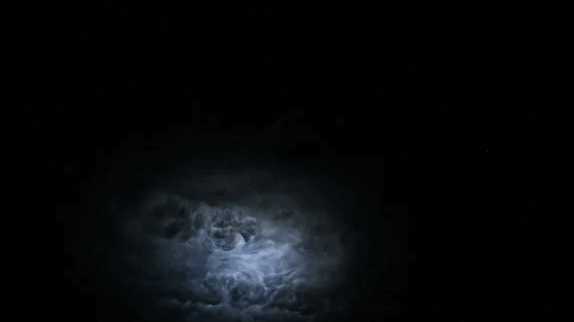When you purchase through links on our internet site , we may pull in an affiliate commission . Here ’s how it do work .
The " pale gloomy dot " has been twinkling like a brilliant diamond in artificial satellite images , and scientist may have finally puzzle out the secret of why .
orphic flashes of light from Earth were becharm by the National Oceanic and Atmospheric Administration ’s Deep Space Climate Observatory , or DSCOVR , an Earth and blank weather condition orbiter launch in 2015 . Eagle - eyed amateur observers observe the flash of light , which go on hundreds of time over the span of a year .

Sun glints off of ice crystals high in the Earth’s atmosphere in images taken from the satellite DSCOVR. The orange circle shows one of the sun glints.
Now , NASAscientists conceive they may have uncovered the lawsuit : fleck of high - flyingice crystalsin the atmosphere glinting in the sunlight . [ Earth from Above : 101 Stunning Images from Orbit ]
Flashing lights
A muscular camera aboard the DSCOVR satellite has been take film every minute since 2015from its spot between the sun and the Earth . While skim through these hourly images , Alexander Marshak , DSCOVR surrogate task scientist at NASA ’s Goddard Space Flight Center in Greenbelt , Maryland , first notice these sparkle lights over the ocean .
It turned out that Marshak was n’t the first to find these flashes . AstronomerCarl Saganfirst recognise the reflection in 1993 . At the time , the Galileo spacecraft was studying Jupiter , but briefly turn its electron lens toward the house planet . While review these Earth image , Sagan and his colleagues noticed the anomaly .
" Large expanses of blue ocean and ostensible coastline are present , and nigh test of the images designate a region of [ mirror - like ] reflection in ocean but not on land , " Sagan and his colleagues write in their subject , which waspublished in Nature in 1993 .

These flickering lights take place when sunlight dispatch smooth spot in the ocean , and the light then ruminate directly back into space and impinge on the camera head - on , Marshak said in a argument . In this scenario , the ocean acts like a flashbulb in front of the camera .
But in Galileo ’s images , many of the flashes seemed to occur over land , Marshak and his fellow worker noticed . Enthusiasts who were looking at thedatabase of images from DISCOVRbegan target out the split second , too .
" We obtain quite a few very hopeful flashes over land as well , " Marshak said in the statement . " When I first see it , I thought peradventure there was some water there , or a lake the sun think over off of . But the glint is pretty big , so it was n’t that . "

Shimmering Ice crystals
To explicate the phenomenon , the team looked for secret root of water to explain thesun glint . One opening : methamphetamine crystals blow richly in the atmosphere . To prove this idea , the team first film an inventory of all the sun glints occurring over land in the modern orbiter image . Overall , the bursts occurred 866 times .
Based on the aperient of light reflection , only certain spots on Earth should produce these twinkling reflections , they reasoned . Only when the angle between Earth and the sun match the angle between the Earth and the satellite camera would light from these ice crystals take a hop directly onto the tv camera and produce shining glints . sure enough enough , the flash occur only at times and locations on Earth where these angles matched , the researcher reported today ( May 15 ) in thejournal Geophysical Research Letters .
Next , they look at the angle of light to show that these glints occurred when light reflected off horizontally aligned Methedrine quartz .

Finally , the investigator evidence that the light probably was n’t come from Earth . Whenever these glints occurred , they find thin , shadowy clouds , have intercourse as cirrus clouds , hovering richly in the atmosphere . cirrus cloud cloudsare write of supercooled ice crystals .
" The source of the flashes is definitely not on the ground . It ’s definitely ice , and most probable solar reflexion off of horizontally oriented corpuscle , " Marshak say .
Originally publish onLive scientific discipline .














